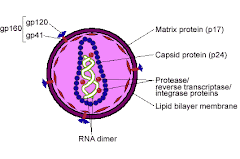"Whether marijuana is more potent today than it was 30 or 40 years ago is at the center of much debate. The U.S. federal government has released information saying that the levels of potency have risen anywhere from 10 to 25 times since the 1960s. Is this a myth or reality?
Testing for Marijuana
An estimated 20 million workers are drug-tested annually in the United States at a cost of more than $1 billion. The body metabolizes THC into about five metabolites before passing it into the body's urine, so drug tests are designed to detect the metabolites instead of THC. Detectable amounts of these metabolites remain in the system for several days to several weeks following marijuana use, depending on the level of use.
The most common test for detecting marijuana or any drug is the immuno-assay. In this test, the urine is mixed with a solution containing an antibody specific to certain metabolites. The antibody is usually tagged with a fluorescent dye or radioactive substance. The amount of fluorescent light or radioactivity is measured to determine the concentration of metabolites in the sample.
Gas chromatography/mass spectrometry may also be used to test for THC metabolites.
"There's no question that marijuana, today, is more potent than the marijuana in the 1960s. However, if you were to look at the average marijuana potency which is about 3.5 percent, it's been relatively stable for the last 20 years. Having said that, it's very important that what we have now is a wider range of potencies available than we had in the 1970s, in particular," Director of the National Institute on Drug Abuse Alan Leshner said in 1999 while testifying in front of the U.S. House Subcommittee on Crime.
Those who support the legalization of marijuana say that the data is skewed because testing was only performed on marijuana of specific geographic origins in the 1960s and 1970s, and therefore is not representative of marijuana potency overall. Officials obtained the samples from a type of Mexican marijuana that is known to contain low levels of THC -- 0.4 to 1 percent. When these levels are compared to other types of marijuana, it looks as if potency levels have risen in the last 30 years.
Typical THC levels, which determines marijuana potency, range from 0.3 to 4 percent. However, some specially grown plants can contain THC levels as high as 15 percent. Several factors are involved in determining the potency of a marijuana plant, including:
* Growing climate and conditions
* Plant genetics
* Harvesting and processing
The time at which the plant is harvested affects the level of THC. Additionally, female varieties have higher levels of THC than male varieties. As a cannabis plant matures, its chemical composition changes. During early development, cannabidiolic acid is the most prevalent chemical. Later, cannabidiolic acid is converted to cannabidiol, which is later converted to THC when the plant reaches its floral maturation.
To determine the average potency levels of marijuana, researchers need to examine a cross section of cannabis plants, which wasn't done in the 1960s and 1970s. This makes it difficult to make accurate comparisons between the THC levels of that time period and the THC levels of today."
Wednesday, September 19, 2007
"Marijuana's" Potency
Subscribe to:
Post Comments (Atom)


















No comments:
Post a Comment